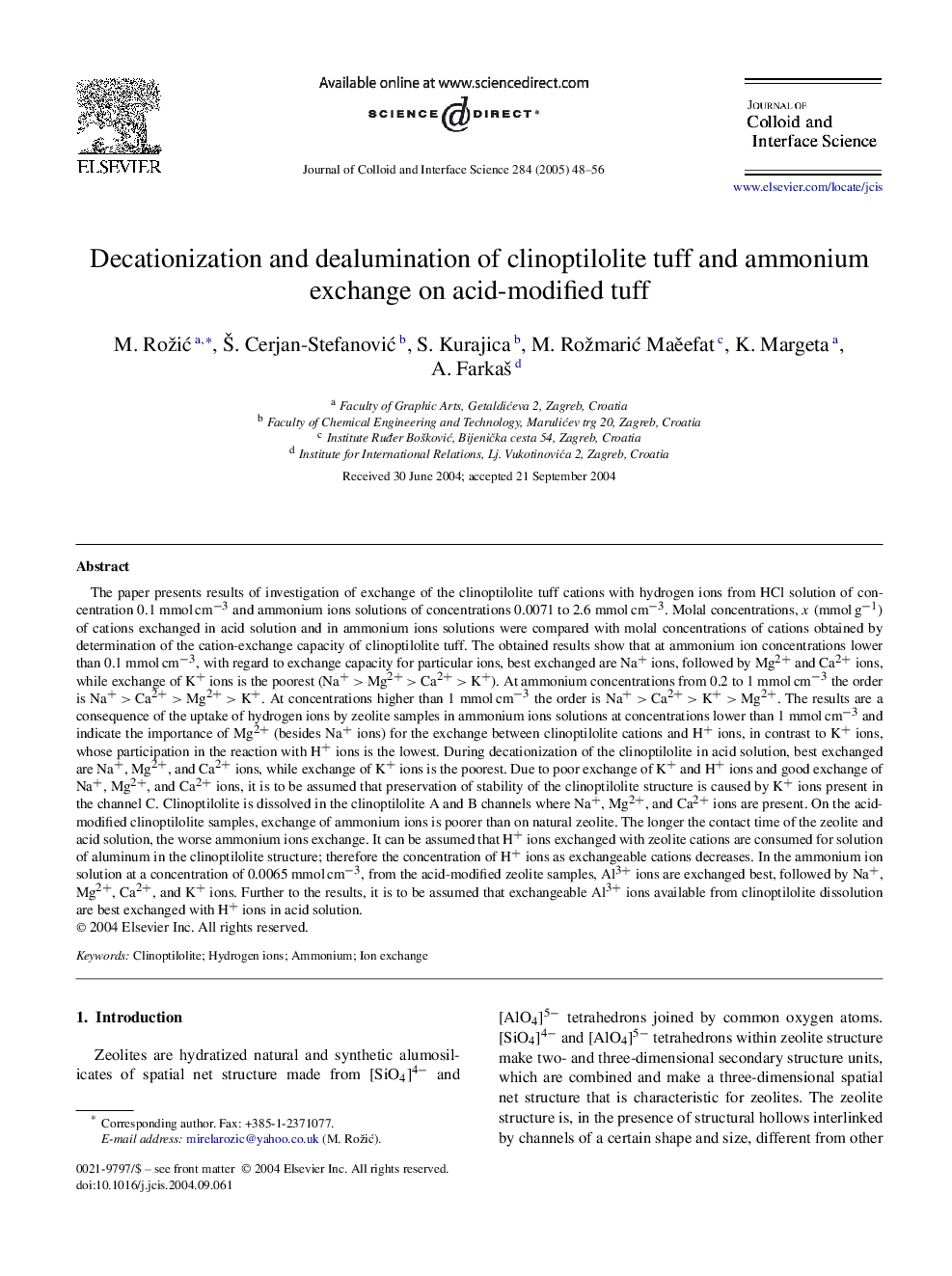| Article ID | Journal | Published Year | Pages | File Type |
|---|---|---|---|---|
| 10378132 | Journal of Colloid and Interface Science | 2005 | 9 Pages |
Abstract
The paper presents results of investigation of exchange of the clinoptilolite tuff cations with hydrogen ions from HCl solution of concentration 0.1 mmolâcmâ3 and ammonium ions solutions of concentrations 0.0071 to 2.6 mmolâcmâ3. Molal concentrations, x (mmolâgâ1) of cations exchanged in acid solution and in ammonium ions solutions were compared with molal concentrations of cations obtained by determination of the cation-exchange capacity of clinoptilolite tuff. The obtained results show that at ammonium ion concentrations lower than 0.1 mmolâcmâ3, with regard to exchange capacity for particular ions, best exchanged are Na+ ions, followed by Mg2+ and Ca2+ ions, while exchange of K+ ions is the poorest (Na+Â >Â Mg2+Â >Â Ca2+Â >Â K+). At ammonium concentrations from 0.2 to 1 mmolâcmâ3 the order is Na+Â >Â Ca2+Â >Â Mg2+>Â K+. At concentrations higher than 1 mmolâcmâ3 the order is Na+Â >Â Ca2+Â >Â K+Â >Â Mg2+. The results are a consequence of the uptake of hydrogen ions by zeolite samples in ammonium ions solutions at concentrations lower than 1 mmolâcmâ3 and indicate the importance of Mg2+ (besides Na+ ions) for the exchange between clinoptilolite cations and H+ ions, in contrast to K+ ions, whose participation in the reaction with H+ ions is the lowest. During decationization of the clinoptilolite in acid solution, best exchanged are Na+, Mg2+, and Ca2+ ions, while exchange of K+ ions is the poorest. Due to poor exchange of K+ and H+ ions and good exchange of Na+, Mg2+, and Ca2+ ions, it is to be assumed that preservation of stability of the clinoptilolite structure is caused by K+ ions present in the channel C. Clinoptilolite is dissolved in the clinoptilolite A and B channels where Na+, Mg2+, and Ca2+ ions are present. On the acid-modified clinoptilolite samples, exchange of ammonium ions is poorer than on natural zeolite. The longer the contact time of the zeolite and acid solution, the worse ammonium ions exchange. It can be assumed that H+ ions exchanged with zeolite cations are consumed for solution of aluminum in the clinoptilolite structure; therefore the concentration of H+ ions as exchangeable cations decreases. In the ammonium ion solution at a concentration of 0.0065 mmolâcmâ3, from the acid-modified zeolite samples, Al3+ ions are exchanged best, followed by Na+, Mg2+, Ca2+, and K+ ions. Further to the results, it is to be assumed that exchangeable Al3+ ions available from clinoptilolite dissolution are best exchanged with H+ ions in acid solution.
Related Topics
Physical Sciences and Engineering
Chemical Engineering
Colloid and Surface Chemistry
Authors
M. RožiÄ, Å . Cerjan-StefanoviÄ, S. Kurajica, M. RožmariÄ MaÄefat, K. Margeta, A. FarkaÅ¡,
